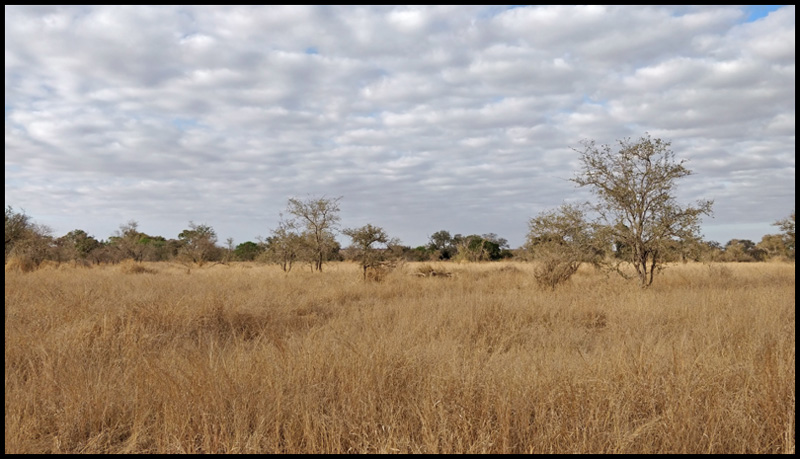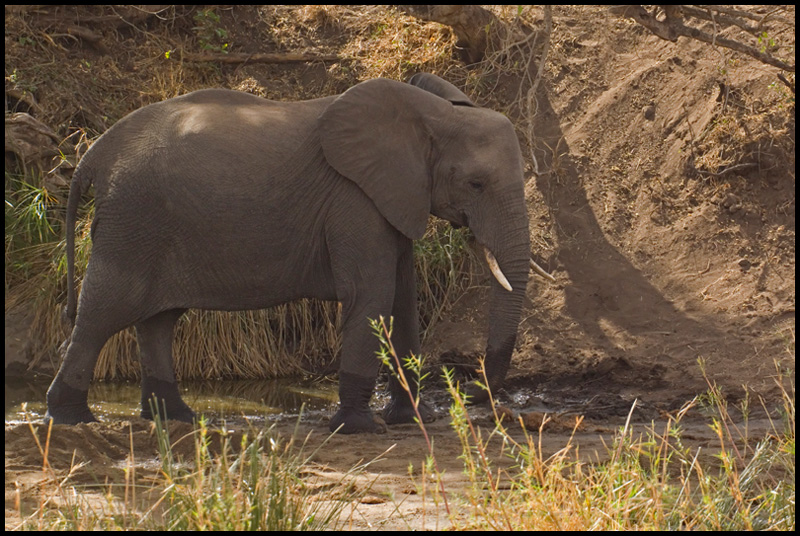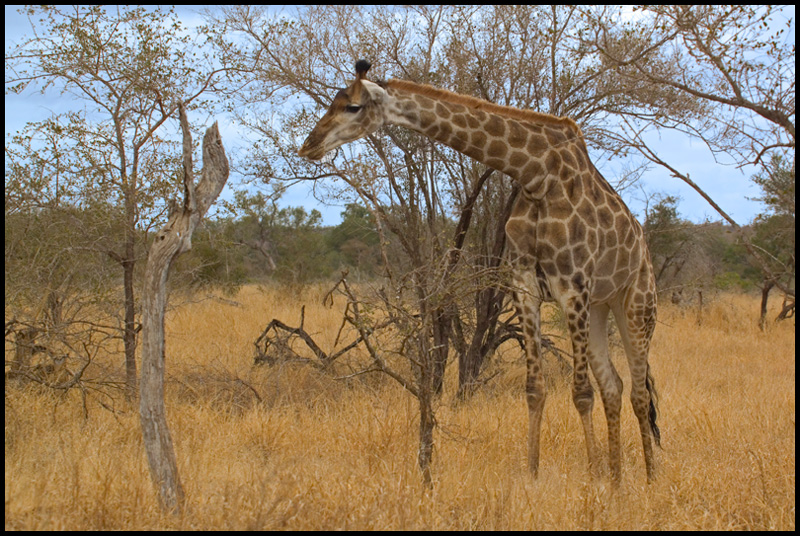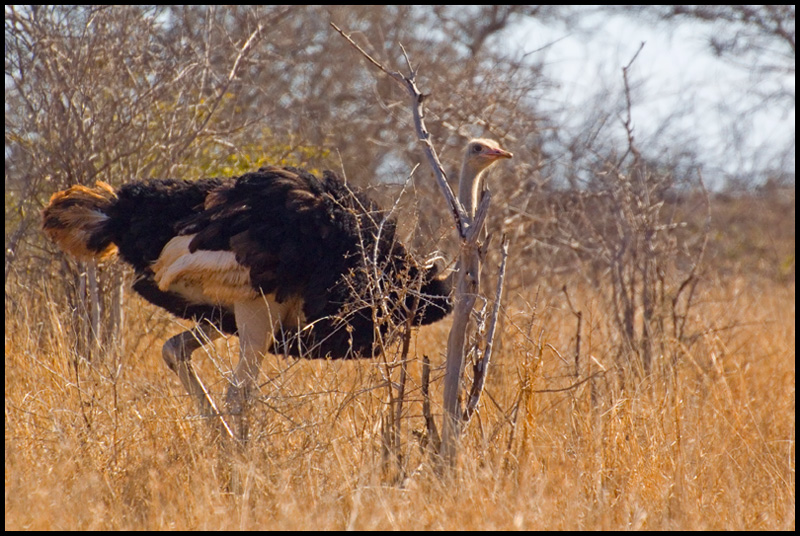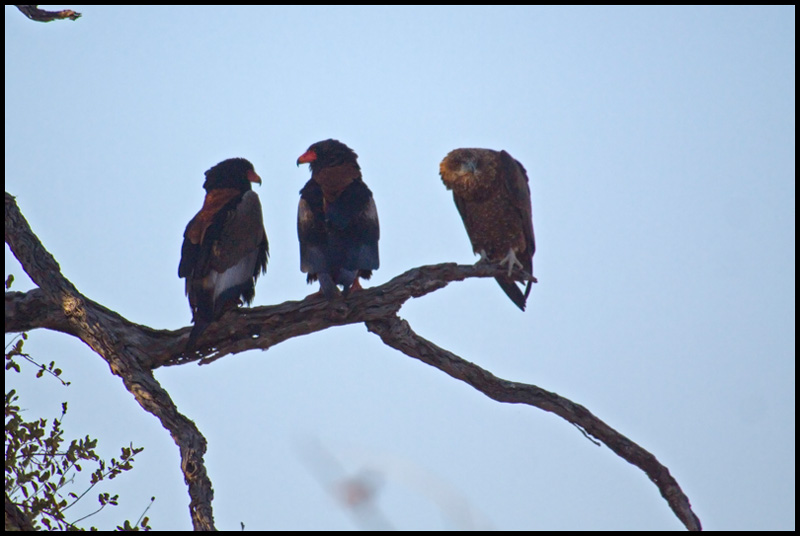Etapas del viaje / Trip sections:
Nuestro quinto día en el Parque Nacional Kruger nos iba a adentrar ya en la parte más central del parque. Esta es la zona que me pareció más similar a la típica estampa de la sabana africana, con menos vegetación densa. Nuestra jornada finalizaría en Olifants, un campamento con buenas vistas al río del mismo nombre.
Our fifth day in Kruger National Park was going to take us into the most central part of the park. This area was the most similar to the typical African savanna, having less dense vegetation. Our day would end in Olifants, a camp with good views over the Olifants river.
La crónica completa del viaje en eBird, incluyendo el mapa y la lista de aves observadas, se puede obtener pinchando en este enlace.
The complete eBird trip report, including map and the list of bird species can be seen in this link.
South Africa map. Location 15 corresponds to Kruger National Park.
El día nos deparó buenos avistamientos. Entre los mamíferos, destacar tres leones (un par de cachorros y una leona intentando cazar un impala), un grupo de 7 mangostas enanas, una hiena manchada y un sinfín de antílopes. Entre las aves, una avutarda kori, un sisón moñudo austral, varias avestruces, picotenaza africano o varias rapaces, incluyendo un águila marcial.
The day gave us good sightings. Among mammals, three lions stand out (a pair of cubs and a lioness trying to hunt an impala), a group of 7 common dwarf mongooses, one spotted hyena and endless antelopes. Among the birds, one kori bustard, one red-crested bustard, several ostrichs, african openbill or several raptors, including a martial eagle.
Kruger National Park map and area explored on August 22th, 2019.
Por la mañana nos movimos básicamente cerca de Satara, entre la carretera S100, hasta llegar al observatorio Sweni, y la H6. De esta forma volvimos a comer a Satara. Por la tarde visitamos el cercano Girivana Waterhole, donde vimos el intento de caza de la leona, para luego dirigirnos, por la S90, hacia Olifants. El paisaje alrededor de la carretera S90 es el típico de las praderas africanas.
That morning we moved around Satara, through the S100 road, until we reached the Sweni Hide, and then coming back to Satara, to have lunch, through the H6. During the afternoon we visited the nearby Girivana Waterhole, where we saw a lioness trying to hunt a common impala. Thereafter, we head, through the S90, towards Olifants. The landscape around the S90 road is that of the typical African grasslands.
Route on August 22th, 2019.
Pero primero, temprano por la mañana, di una vueltecita por el campamento, donde pude disfrutar de varias especies nuevas, como el bufalero piquirrojo o el brubrú, y otras ya observadas con anterioridad, como el gorrión sudáfricano o diferentes tocos.
But first, early in the morning, I birded around the camp, where I could enjoy several new species, such as red-billed buffalo-weavers or brubru, and others already observed previously, such as the Southern grey-headed sparrow or different hornbills.
La lista completa de especies observadas en el Satara Camp (20 especies de aves) y su localización puede encontrarse en este enlace.
The complete list of species observed in Satara Camp (22 bird species) and its location can be seen in this link.
La zona de la S100 fue muy productiva, con impalas, ñúes y abundantes elefantes, así como multitud de queleas comunes, alguna águila volatinara, pero sobretodo dos cachorros de león, vistos a placer en la zona que daba hacia el río.
The area of the S100 was very productive, with impalas, wildebeest and abundant elephants, as well as a multitude of red-billed queleas, some bateleurs, and especially two lion cubs, seen at pleasure in the area around the river.
En el Gudzani waterhole poca cosa, dado el bajo nivel de agua que presentaba. Eso sí, allí descansaba un gran grupo de kob acuático oriental.
The Gudzani waterhole offerend few observations, given the low level of water it presented. However, a large group of Ellipsen waterbuck was resting there.
Sin duda el mirador N'wanetsi y el observatorio asociado Sweni son puntos indispensables a visitar. Entre los mamíferos, hipopótamos, elefantes, e impalas. Entre las aves, varias tórtolas, picotenaza africano o tántalo africano. Además, el paisaje era espectacular.
Without a doubt, the N'wanetsi viewpoint and the associated Sweni Hide are essential points to visit. Among mammals, hippos, elephants, and impalas. Among the birds, several doves, african openbill or yellow-billed stork. In addition, the landscape was spectacular.
De vuelta a Satara nos recibieron un grupo de tocos, buscando algo que llevarse a la boca.
In Satara we were received by a group of hornbills, looking for some food.
Ya por la tarde, después de comer, nos dirigimos hacia el oeste, hasta el Girivana waterhole, que nos ofreció el momento de la jornada. Una leona saltando sobre un impala. Aunque falló, luego vino hasta nuestro coche, pasando a apenas 10 cm de él, para tumbarse a descansar a unos metros de nosotros. Además de ambas especies, elefantes, mangosta enana, y muy cerca, águila marcial y águila estriada.
After lunch, we moved west, to reach the Girivana waterhole, that offered us the best sight of the day. A lioness jumping on an impala. Although she failed, then she moved until our car, passing just about 10 cm from us, to lie down to rest a few meters to our left. In addition to both species, elephants, common dwarf mongoose, and very close to the waterhole, martial eagle and african hawk-eagle.
Y ya en ruta hacia Olifants, aparecieron las avestruces, avutardas kori y sisón moñudo austral. Destacar también una hiena manchada ya en el río Olifants.
And in the route to Olifants, we saw ostrichs, kori bustards and red-creasted bustard. Also a highlight, a spotted hyena already in the Olifants River.
La lista completa de especies observadas en la ruta entre Satara y Olifants (48 especies de aves, 19 de mamíferos y dos de reptiles) y su localización puede encontrarse en este enlace.
The complete list of species observed between Satara and Olifants (48 bird species, 19 of mammals, 2 of reptiles) and its location can be seen in this link.







